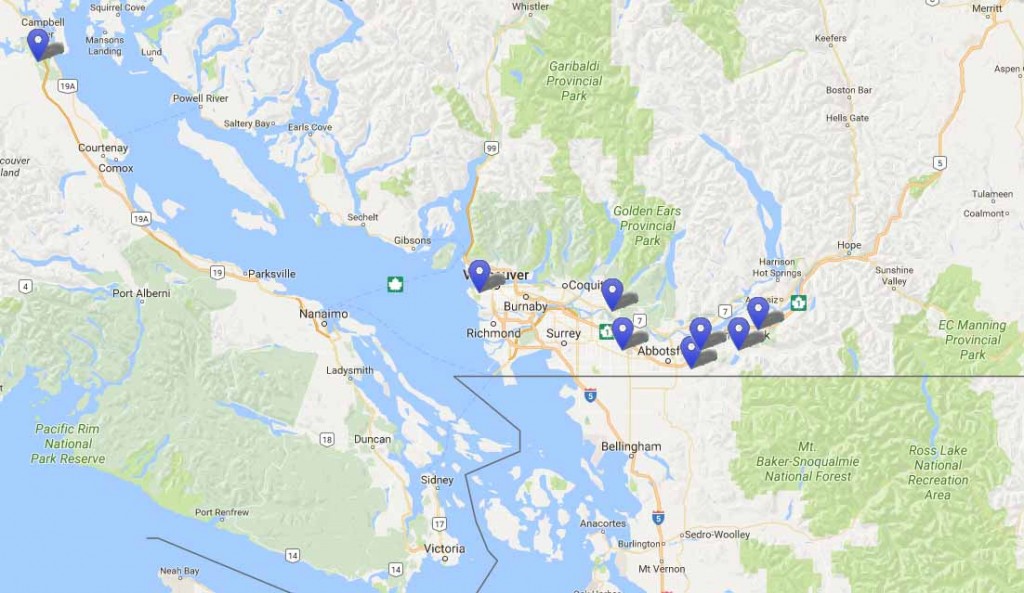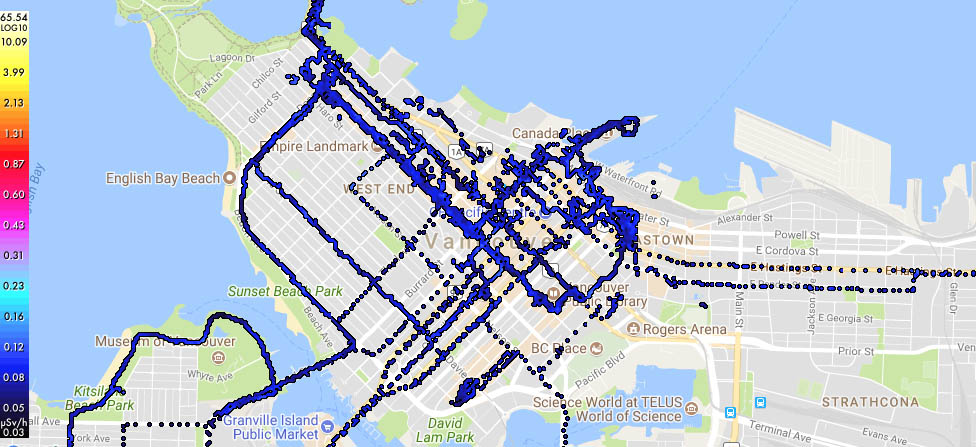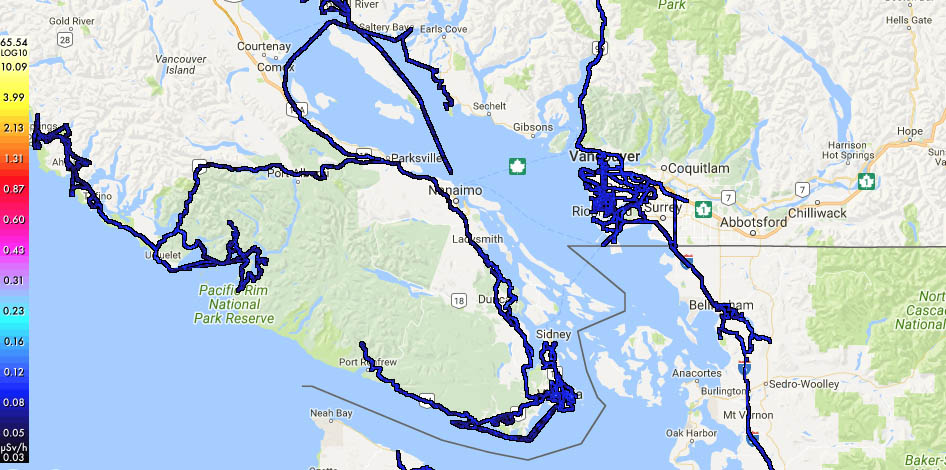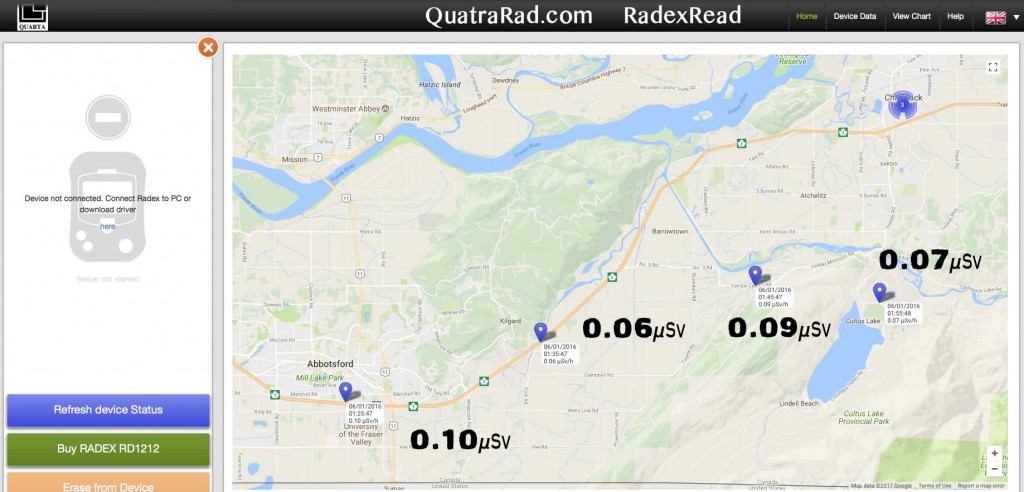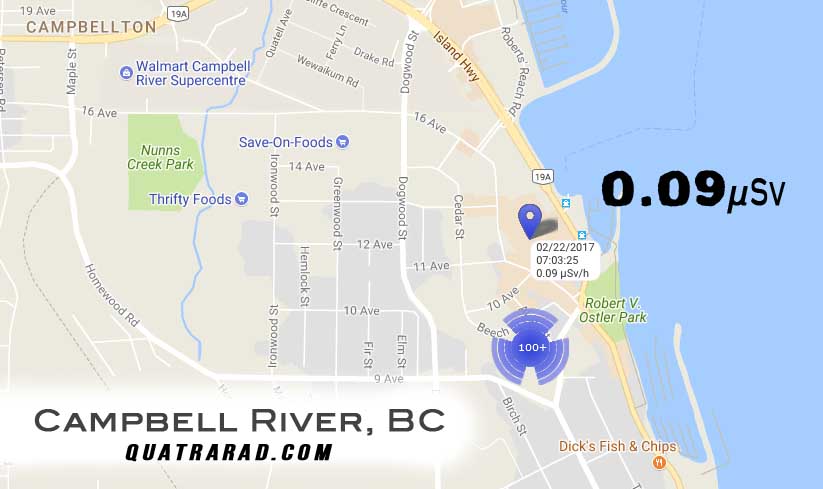The entire West Coast of North America should be concerned about Ionizing Radiation from Japan and Washington State. Is it as bad as they say, Is it worse? Have a look. Is British Columbia measuring this? Some have, but more locations would provide a better picture.
British Columbia
| uSv/h | CPM | Date | Past Reading | uSv/h | CPM | |
| Vancouver | 26 | April 2015 | Stanley Park | 42 | ||
| Horseshoe Bay | ||||||
| WhiteRock | ||||||
| Pitt Meadows | 0.12 | 21 | Sept 7, 2017 | Sept 6, 2017 | 0.10 | 14 |
| Abbotsford | 0.10 | June 1, 2016 | ||||
| Chilliwack / Cultus Lake | 0.08 | May 2016 | ||||
| Victoria | ||||||
| Campbell River | 0.09 | Feb 22, 2017 | ||||
| Tofino | ||||||
| Powell River | ||||||
| Prince Rupert |
Geiger Counter Readings are from various sources : Safecast.org gmcmap.com QuardraRad.com
Vancouver, British Columbia :
https://www.youtube.com/watch?v=m61UyoEHF8Q
These measurements were taken between 2015-09-11 and 2016-03-10 New Readings are needed in BC!!!
Alberta student’s science project finds high radiation levels in grocery-store seafood
Alberta high-school student Bronwyn Delacruz loves sushi, but became concerned last summer after learning how little food inspection actually takes place on some of its key ingredients.
The Grade 10 student from Grande Prairie said she was shocked to discover that, in the wake of the 2011 Fukushima nuclear disaster in Japan, the Canadian Food Inspection Agency (CFIA) stopped testing imported foods for radiation in 2012.
So, she decided to carry out her own tests.
Armed with a $600 Geiger counter bought by her dad, Delacruz studied a variety of seafoods – particularly seaweeds – as part of an award-winning science project that she will take to a national fair next month.
“Some of the kelp that I found was higher than what the International Atomic Energy Agency sets as radioactive contamination, which is 1,450 counts over a 10-minute period,” she said. “Some of my samples came up as 1,700 or 1,800.”
Delacruz said the samples that “lit up” the most were products from China that she bought in local grocery stores.
Her results caught the attention of judges at the Peace River Regional Science Fair, who moved her project along to the Canada-Wide Science Fair in Windsor, Ont., in May.
Delacruz also hopes to catch the attention of lawmakers in Ottawa with a petition urging the federal government to do more radiation testing on food.
The CFIA states online that it “continues to monitor events in Japan” but has no immediate plans to resume regular radiation testing, noting “Japanese controls on the sale of contaminated product remain intact.”
The agency did extensive testing on a variety of foods for a year and a half after the nuclear disaster in Japan but found no cause for concern at that time.
“More than 200 food samples were tested and all were found to be below Health Canada’s actionable levels for radioactivity,” the CFIA states in a February 2014 posting on its website. “As such, enhanced import controls have been lifted and no additional testing is planned.”
Published on Dec 22, 2016
